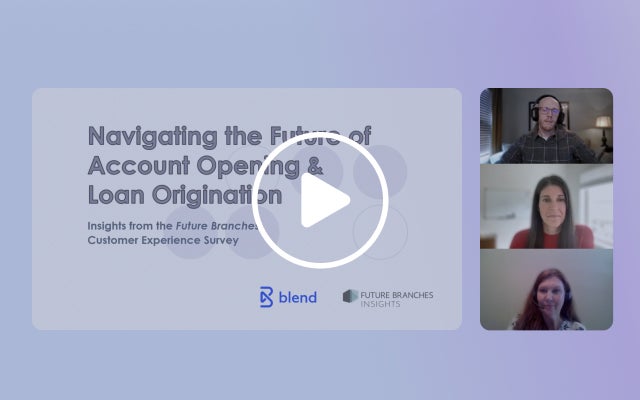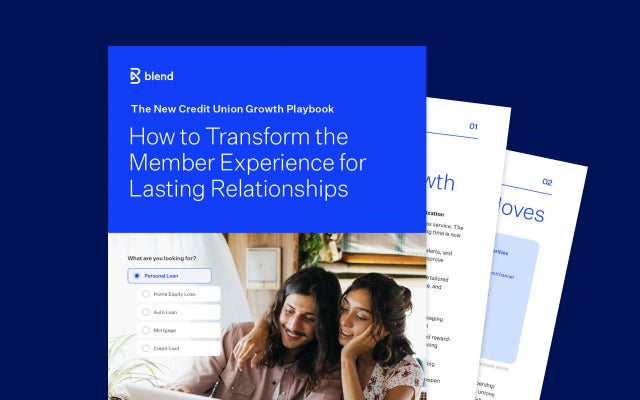August 10, 2020 in Challenges and solutions
5 factors influencing digital self-serve application submission rates

Chances are you’ve gotten at least one email from an online retailer reminding you to finish purchasing what’s sitting in your shopping cart. These retailers understand that abandoned carts are really lost revenue, and they continually work to improve it. In fact, in a survey of top-performing retailers, conversion optimization was the most common focus for investment leading into 2020. Are you obsessing over digital self-serve application submission rates in the same way that retailers are treating abandonment?
Application submission rates are, of course, only one piece of the puzzle. An excellent consumer experience — one that drives converted and closed loans — is a multi-step process, of which the initial submission is just one step. However, the application submission step sets the tone for who the remaining process will unfold, and it is natural to begin problem resolution there.
Discover the top five factors influencing digital self-serve application submission rates
Today, according to Jim Marous, publisher of the Digital Banking Report, the abandonment rate for online account opening is 19%. Frustration is natural when the time and resources driving traffic to digital application experiences are culminating in visitors dropping off at a rate of one in five. Here are five influences on digital self-serve application submission.
1. Applicant fatigue
Applications are in many cases not one coherent entity, but rather a series of mini-journeys. Not only are there decision points in the marketing process that funnel customers to the application itself, but in addition, customers must navigate several checkpoints ahead of hitting submit.
When you add in the realities of day-to-day life, there are plenty of opportunities for customers to get discouraged.
Abandonment can happen because too much personal information is required and customers don’t have the necessary documents handy. Or because of form field fatigue. Or because the application doesn’t work on their preferred device. Or because the commercial break ended. Or because they didn’t understand the way that question was phrased.
In short, human beings are fickle. It can help to assume that at every given opportunity, applicants prefer to abandon the process.
Next step: Map your digital customer journey from start to submit to identify inflection points. See if you can compare differences across your product lines and identify those moments that make the process work better.
2. Ineffective user design
An outdated and poorly designed user experience makes it difficult to qualify customers. Many applications feature long forms, hard credit pulls, asks for information the lender already has, and manual documentation validation. Generalized slightly, we find that many applications fall short on three variables: clarity, speed, and ease of use.
The main clarity issues that cause confusion for customers include language usage, question resolution, and progress tracking. When customers can’t understand the actions they’re supposed to take and how to proceed to the next step, they’re unlikely to keep trying.
Speed is another common user experience concern. According to the Digital Banking Report, “abandonment rates increase significantly as the time required to complete an application increases.” One component of this is requiring customers to input unnecessary information; not only does it create a lengthier process, when the lender already has access to some or all of the information, frustration may win out.
Finally, the user-friendliness of the application’s design impacts submission rates, as today’s customers expect to be able to jump into a process and succeed without having to waste time being taught. In the same way that a consumer can simply sign up for a social media service without sitting through a seminar, consumers expect to navigate your application process without required coaching.
Next step: Create a scorecard for your applications’ experience and rate it on clarity, speed, and ease of use. Optimize your applications by working with partners such as Blend who have built best-in-class conversion solutions into every application and beyond.
3. Ease of omnichannel interaction
New channels have introduced submission complexity. The ubiquity of mobile devices is changing the nature of banking across all stages of the consumer journey. For example, 93% of respondents to a Celent Retail Banking Technology Importance survey indicated that mobile banking channel development is important. But research from Javelin Research shows that only 8% of successful account applications are completed start to finish on a mobile device.
Today’s customers are used to getting things done whether they’re waiting in line at the grocery store or sitting at their desk in the office. Customers will likely want to access applications across devices, starting in one channel and picking back up on another, right where they left off. If a customer assumes this is an option but ends up losing their progress, it is unlikely they will make the effort to begin again.
Next step: Test your loan application process across devices. Go through the process yourself, identify trends in customer support conversations, and talk with the product team.
4. Interconnections between products and tech stack
Overall submission rates are also influenced by the extent to which different products do or don’t work together. Many banks and credit unions are reliant on patch-worked legacy technology, which can result in a disconnected customer experience. Further exacerbation may be expected, given that in 2022, North American banks are expected to spend nearly one-half of their total information technology budget on new technology.
Disconnection can make it impossible to bring together application flows for different products. For example, while a consumer is applying for a loan, a credit union may require a separate flow to become a member. Or a bank might not be able to offer a seamless credit card sign up off of a consumer loan because the credit card is offered through a separate service.
Next step: Watch a customer try to complete multiple applications. Check customer support feedback to see sticking points. Talk to marketing about what flows they use today to maximize share of wallet.
5. Increasingly competitive environment
Today’s consumers have been primed to expect one-touch conversion experiences regardless of industry. Fintech and neobank competitors know this, and they are increasingly providing hard-to-beat rates offered through top-notch digital experiences across channels, just to make things even more challenging.
Not only are standards being raised by new lender entrants, but ancillary financial products are also bleeding into the traditional lending space. More than 60% of millennials use peer-to-peer payment services. Therefore, if lenders aren’t meeting this online standard, they’re likely to suffer from lower than expected submission rates.
Next step: Try to make a purchase on any of the commonly used e-commerce sites and document the experience. Look for parallels for where your application process could be improved.
Impact digital applications
The influences on digital application submission rates are vast, which means the opportunity for improvement is ripe. By making an impact on any one of these factors, you can differentiate your digital self-serve experience and delight customers.
But remember it’s a process, especially as technology and consumer preferences rapidly change. To fully assess these critical conversion levers, it’s key to “vaccinate your team with user-centricity,” as FinExtra recommends.
It may no longer be enough to simply hire a strong digital team or UX designers to ensure the best customer experience. Partnerships with leading technology providers offer an opportunity to embed conversion improvements across your organization.
Learn more about optimizing digital self-serve application submission
Find out what we're up to!
Subscribe to get Blend news, customer stories, events, and industry insights.


